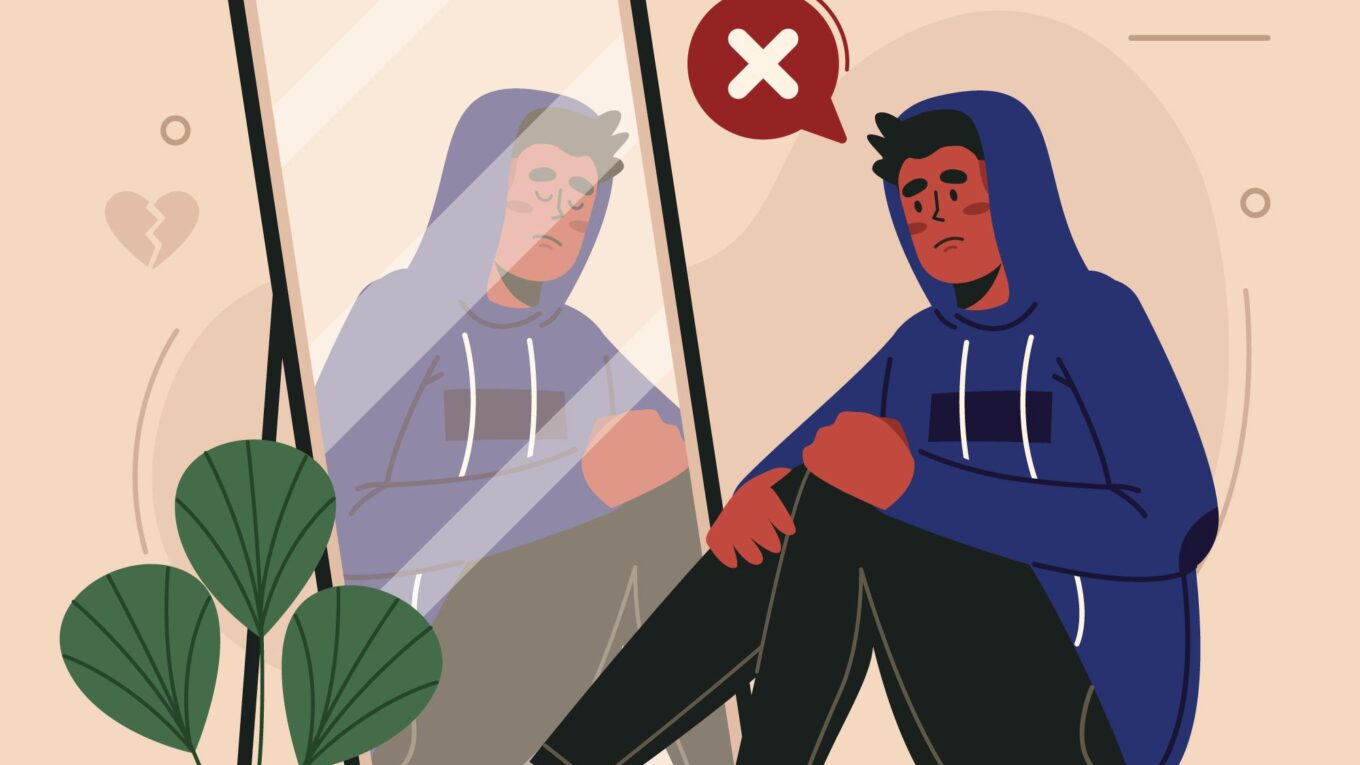Self-Harm Isn’t the Answer: Healthier Ways to Cope With Emotional Pain
Self-Harm Isn’t the Answer: Healthier Ways to Cope With Emotional Pain
Learn why self-harm isn’t the answer and explore safe, supportive strategies to manage emotional pain, build resilience, and regain control of your life.
Read Disclaimer
There are moments in life when emotional pain feels unbearable, like carrying a weight too heavy for your chest. You may feel trapped in your own mind, unable to escape the constant storm of thoughts that tell you there is no relief. In those moments, self-harm can sometimes present itself as a release, a way to channel inner turmoil into something physical and visible. But while it may seem like a temporary escape, it isn’t the solution—it doesn’t heal the wound inside, it only creates more hurt outside. What you deserve is not more scars, but more understanding, compassion, and tools that can help you cope with what feels overwhelming. You are not weak for feeling this way, nor broken for struggling. You are human, and being human sometimes means carrying pain that is bigger than words.
When people turn to self-harm, it’s often misunderstood by others as simply a cry for attention. But in truth, it’s rarely about that. It’s a complex, deeply personal act, often born from feelings of emptiness, shame, anger, numbness, or the need to feel something when life feels too overwhelming or too hollow. For many, self-harm becomes a silent language—a way of expressing emotions they can’t put into words. This is important to acknowledge because shame thrives in silence. The more we stigmatize and judge, the more isolated a person can feel, making the cycle harder to break.
Science tells us that self-harm triggers the release of endorphins—the brain’s natural painkillers—which can momentarily numb emotional pain. But just like a bandage on a deep wound, it doesn’t address the underlying problem. The relief is fleeting, and it often gives way to guilt, regret, or deeper emotional distress. This is why finding healthier alternatives is so crucial. It’s not about taking away a coping mechanism without replacing it—it’s about introducing safer, more nurturing ways to deal with unbearable emotions.
One powerful approach is learning to shift from self-destruction to self-expression. For example, many people find creative outlets like writing, painting, music, or dance to be transformative. These activities allow emotions to flow outward, but without leaving behind physical scars. They also build a sense of identity and meaning beyond the pain, giving you something constructive to hold onto in difficult times. Journaling, in particular, has been shown in research to lower emotional intensity by translating thoughts into words. Writing down what you feel can create just enough distance from the pain to help you see it from a different perspective.

Another important step is practicing grounding techniques—methods that anchor you to the present moment when your thoughts start spiraling. Simple actions such as holding an ice cube, taking a cold shower, or even naming five things you can see, four things you can touch, three things you can hear, two you can smell, and one you can taste can help bring you back into your body and away from harmful impulses. These are not just distractions—they are ways of telling your nervous system that you are safe right now, even if your mind is screaming otherwise.
Connection also plays a powerful role in recovery. Pain often convinces us that we are alone, but the truth is that isolation only magnifies the suffering. Talking to someone you trust—whether a friend, family member, or professional—can provide a lifeline. Sometimes, what people need most is not advice, but simply a safe space to be heard without judgment. If opening up feels impossible, even sending a simple message like “I’m not okay right now” can be the first step toward relief. For those who feel they have no one to turn to, helplines and online communities can offer immediate, anonymous support.
Therapy is another essential part of the healing journey. Cognitive Behavioral Therapy (CBT), Dialectical Behavior Therapy (DBT), and trauma-informed approaches are proven to help people understand the roots of their self-harm and learn healthier coping skills. These therapies not only address behavior but also work on the emotional pain beneath it. A therapist can provide practical tools to navigate urges, such as emotion regulation strategies, self-soothing practices, and problem-solving skills. More importantly, therapy offers a compassionate presence—someone who can walk beside you in your pain rather than forcing you to face it alone.
Sometimes, the most helpful shift comes from learning to replace self-harm with small acts of self-care. This doesn’t mean bubble baths and scented candles, unless that’s what soothes you—it means recognizing your needs and responding to them with kindness. Maybe it’s wrapping yourself in a blanket when you feel exposed, maybe it’s drinking a glass of water when your body feels neglected, or maybe it’s stepping outside for fresh air when your room feels suffocating. These small choices may not erase the storm, but they help you build trust with yourself again, teaching your body and mind that you are worthy of gentleness, not punishment.
It’s also important to understand that healing is not linear. There may be days when you feel like you’ve made progress, only to have an urge return unexpectedly. This doesn’t mean you’ve failed—it means you are still human. Progress is about building resilience, learning to ride out the waves instead of being swept away. Every time you choose a healthier alternative, even once, you’re teaching your brain a new way of responding to pain. Over time, these choices add up, slowly reshaping the pathways that once led you toward harm.
Real-life stories show us that people who once struggled with self-harm often discover strengths they didn’t know they had. They become advocates, healers, artists, or simply individuals who live more authentically because they’ve survived something so difficult. Their journey proves that you are not defined by your scars or your struggles. Instead, you are defined by your resilience, your courage to keep moving forward, and your ability to search for light even when everything feels dark.
The most important reminder is this: self-harm may feel like a solution, but it does not reflect your worth. You are not your pain, and you are not your scars. You are someone who deserves to be here, who deserves care, love, and healing. If you are struggling, know that there is help available and people who want to support you. You don’t have to go through this alone. You may not see it now, but the fact that you are still here, still searching for answers, means you already have a strength inside you that is worth holding onto.
Recovery takes time, patience, and compassion. It may not happen overnight, but step by step, you can build a life where pain does not define you. In the moments when the urge feels strongest, try to remember that choosing not to harm yourself is an act of incredible bravery. Every time you reach for a healthier tool, every time you speak your truth, every time you choose life over hurt, you’re proving that survival is not only possible but powerful. And one day, you’ll look back and realize that you didn’t just survive—you grew stronger, deeper, and more compassionate because of the battles you’ve faced.
FAQs with Answers
- What does self-harm mean?
Self-harm refers to intentionally inflicting pain or injury on oneself, often as a way to cope with overwhelming emotions. - Why do people turn to self-harm?
People may self-harm to release emotional pain, regain a sense of control, or express feelings they struggle to put into words. - Is self-harm the same as a suicide attempt?
Not always. While self-harm isn’t always intended as suicide, it increases the risk of suicidal thoughts and behaviors. - Can self-harm become addictive?
Yes, self-harm can create a cycle where the temporary relief reinforces the behavior, making it hard to stop. - How can I tell if someone is self-harming?
Look for unexplained injuries, wearing long sleeves even in hot weather, or secretive behavior. - What are safe alternatives to self-harm?
Alternatives include journaling, exercising, using stress balls, practicing deep breathing, or calling a supportive friend. - Does self-harm actually help with emotions?
It may bring short-term relief, but it doesn’t resolve underlying issues and often leads to deeper distress. - Why is it so difficult to stop self-harming?
Because it can become a coping mechanism tied to brain chemistry, emotional relief, and habitual behavior. - What should I do immediately if I feel like self-harming?
Distract yourself with grounding techniques, call a trusted person, or use crisis helplines for immediate support. - Is professional help necessary to stop self-harm?
While some people manage alone, therapy and professional support greatly improve recovery chances. - What therapies help with self-harm?
Cognitive-behavioral therapy (CBT), dialectical behavior therapy (DBT), and trauma-focused therapy are highly effective. - Can medications help with self-harm urges?
Medications don’t treat self-harm directly but can help manage underlying conditions like depression or anxiety. - What role does mindfulness play in reducing self-harm?
Mindfulness teaches awareness and acceptance of emotions without judgment, helping reduce harmful impulses. - How does exercise help with self-harm urges?
Exercise releases endorphins, reduces stress, and provides a healthy outlet for pent-up emotions. - Can talking to friends or family stop self-harm urges?
Yes, sharing feelings with trusted people reduces isolation and provides emotional relief. - What if my family doesn’t understand self-harm?
Seek external support groups, helplines, or therapists who can validate and guide you. - Is self-harm more common in teenagers?
Yes, but it can affect people of all ages, including adults. - Does social media influence self-harm?
Exposure to harmful content can trigger urges, but supportive online communities can also help recovery. - How can I safely express anger without self-harming?
Try punching a pillow, screaming into a cushion, writing, or engaging in physical activities. - What are grounding techniques to fight self-harm urges?
Examples include the 5-4-3-2-1 sensory method, holding ice cubes, or focusing on controlled breathing. - Can art or creativity help replace self-harm?
Yes, creative expression allows release of emotions in a safe and constructive way. - How does journaling help with self-harm recovery?
Writing helps process emotions, track triggers, and reflect on progress. - What should I avoid when helping someone who self-harms?
Avoid shaming, blaming, or pressuring them—it often worsens feelings of guilt and isolation. - How can parents support a child who self-harms?
Offer compassion, listen without judgment, and encourage professional help. - Is recovery from self-harm possible?
Yes, many people fully recover with the right strategies, support, and persistence. - How long does it take to stop self-harming?
It varies; some improve quickly, while others take longer due to underlying conditions. - Can scars from self-harm fade?
Over time, scars may fade, but some may remain. Emotional healing, however, is always possible. - What should I do if a friend tells me they self-harm?
Listen calmly, offer support, encourage them to seek help, and avoid judgment. - Are there helplines for people who self-harm?
Yes, most countries have mental health crisis hotlines and online chat services available 24/7. - Why is compassion important in self-harm recovery?
Self-compassion helps reduce guilt and shame, making it easier to adopt healthier coping strategies.
